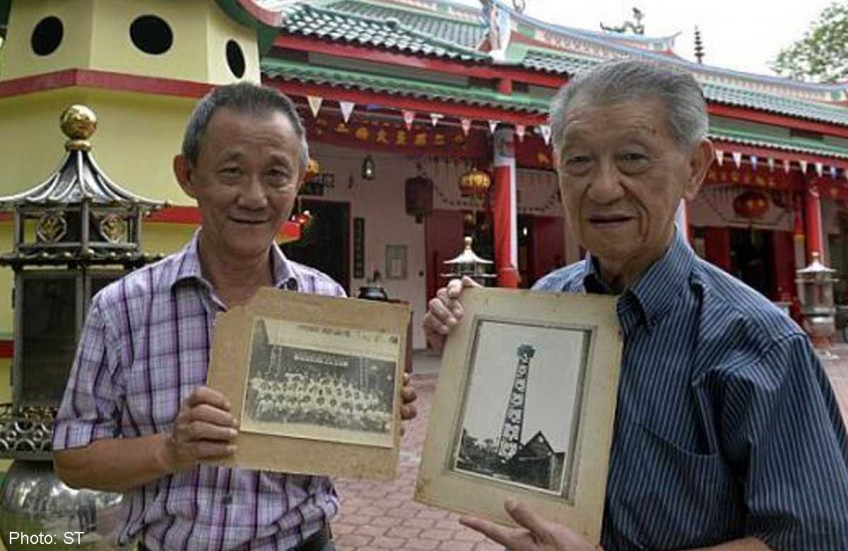Dragon playground, United Temple: Toa Payoh's rich heritage

Long-time residents and others with links to Toa Payoh have come forward to share their memories of the estate as part of a heritage trail launched today.
Temple caretaker Ng Giak Hai, 65, who grew up in Toa Payoh, shared a photo of a religious celebration at United Temple from the 1980s.
This photo is now featured on a marker erected outside the Lorong 7 temple, which was completed in 1974 and houses five different temples from the estate's kampung days.
It pioneered the combined temple model which eventually led to the establishment of 68 combined temples from the 1970s to 2012.
"Our temple continues to be a centre of activity for worshippers and residents, just as it used to be in the old days," said Mr Ng proudly.
Developed by the National Heritage Board (NHB), the self-guided trail comes with a detailed 64-page booklet and comprises nine heritage markers and 23 sites with historical and social significance.
Its spokesman said its team took a year to piece the trail together.
Along the way, researchers gathered anecdotes from residents and included them in the trail's booklet to "better convey the estate's social memory and vibrancy", she said.
This is the 12th national heritage trail launched by NHB since the first one on the Civic District was developed in 1999 as part of the country's millennium celebrations.
Heritage blogger and naval architect Jerome Lim, 49, who grew up in Toa Payoh and contributed photos of Queen Elizabeth II's visit to his family's three-room Toa Payoh flat in 1972, said the trail has been a long time coming.
"It has been under the radar compared to older estates like Tiong Bahru and Queenstown," said Mr Lim, adding that Toa Payoh is rich in history.
In the early 1900s, the swampland became home to villages, alongside large swathes of plantations from the 19th century.
By the 1950s, the colonial government began acquiring land in the area for housing.
This marked the start of the estate's journey to modernisation, as the first housing estate planned and built by the Housing Board (HDB) in the 1960s.
Two of the markers on the trail are the Toa Payoh dragon playground in Lorong 6 and the Toa Payoh Town Park at the junction of Lorong 2 and Lorong 6.
They are among some of HDB's celebrated works.
Mr Lim said: "The HDB's approach was a rather integrated one and the estate was regarded as the jewel in the Housing Board's crown."
Toa Payoh was also the site of many firsts - it was where the first NTUC Welcome Supermarket and the first fully air-conditioned POSB branch were set up.
Mr Lim also noted the numerous religious institutions scattered across the neighbourhood that were built to serve the community.
Volunteer guide Vasanthi Veera, 43, an administrative executive who studied in the now-defunct East Payoh Secondary School, said the tour will be useful for both residents and visitors.
She added: "Hundreds of people from across Singapore flock to the HDB Hub (in Toa Payoh) every day but have little idea about its role in Singapore's housing history and the changes the place has undergone.
"The trail and the markers will help raise awareness and leave a lasting legacy for future generations.

This article was first published on August 17, 2014.
Get a copy of The Straits Times or go to straitstimes.com for more stories.